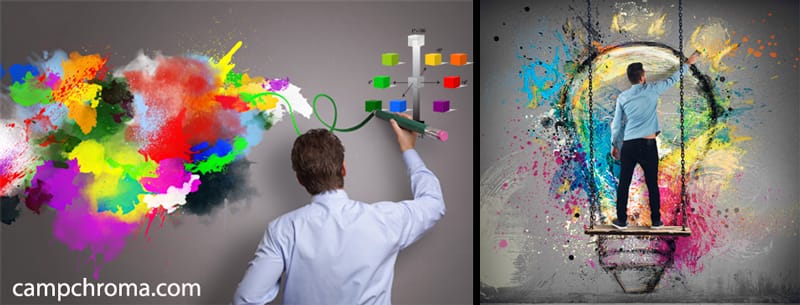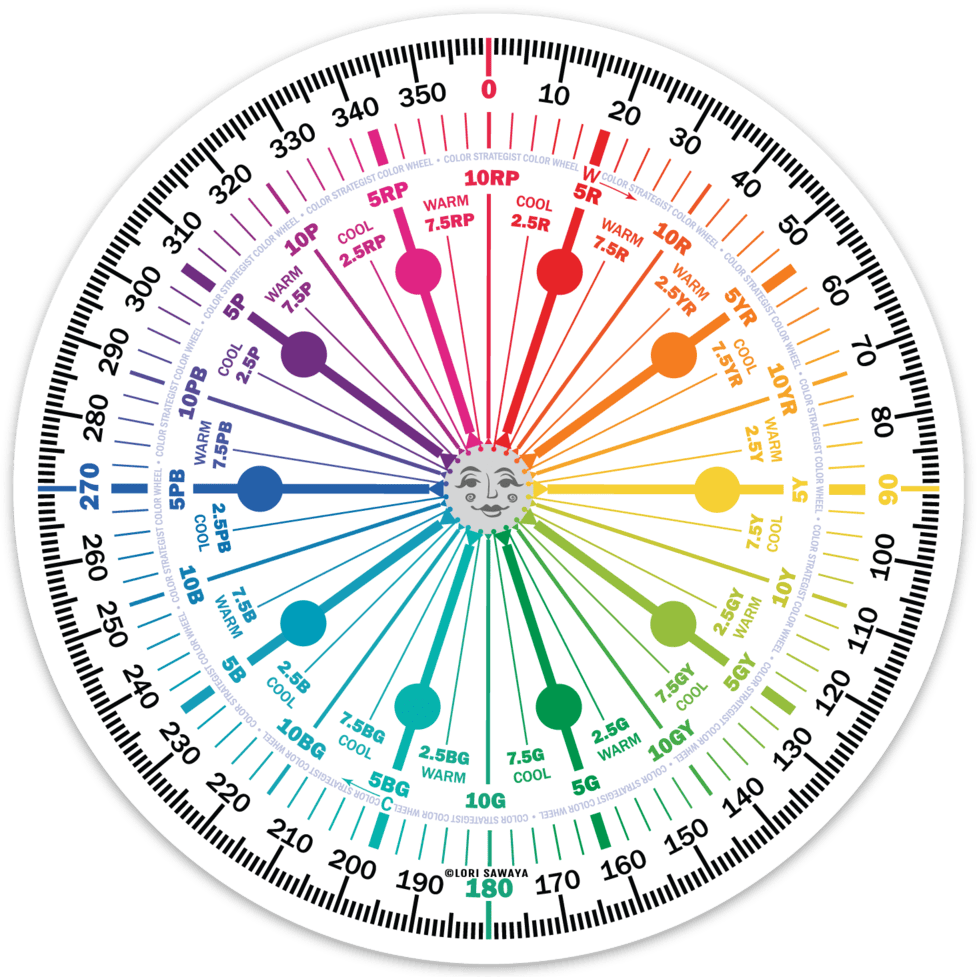©2016 Lori Sawaya
Hue vs Color – The Breakdown
The definition of hue is something everyone thinks they have an intuitive handle on.
Until one starts to really think about hue vs color – like, what *is* the difference between hue and color and can you use the terms interchangeably?

The answer is no, you shouldn’t use hue and color interchangeably.
From color scientist to fine artist and every kind of designer in between, you need to segregate hue parents from child colors.
It’s especially important if you want to use the framework of color models and order systems because they put color in order according to hue family.
Why would you want to use a framework of color models and order systems?
Because it’s the same system that manufacturers use to make color.
There is only one color system used by all manufacturers of paint and material for the built environment.
And it only makes sense to use the same color system to choose and specify color that’s used to make it in the first place.
How Hue and Color Work Together
When you identify full chroma hue parents, like the ten you see below, you have an evidence-based framework to organize every other color that isn’t as strong in chroma.
As you can see in this infographic, there is a place to categorize tints of whites, tones of gray and shades of child colors.
You have a place for pastels, muted colors, near neutrals – every kind of color you can think of belongs to a hue family.
When you see it laid out and organized like this, the answer to the hue vs. color question is crystal clear. Hue and color must be different. Keep reading to learn why.
Color Relationships = Harmony
Color harmony comes from color relationships. When you have colors properly organized into families, it’s easy to create harmonious color schemes.
The rule of thumb goes like this:
- Colors from the same hue family go together.
- Colors with the same or similar Value go together.
- Colors with the same or similar Chroma go together.
Easy to execute color strategies like this are only possible with an order system based on a hue parents and child colors framework and The Color Strategist Color Wheel.
Differentiating Hue From Color
So, here’s the answer to the million-dollar hue vs color question, “What IS the best way differentiate hue from color?”
Hue has only one dimension and color has three dimensions.
You were probably expecting something far more dramatic and complicated but it really is that easy.
Making color easy to understand is actually what color science does best.
And the deeper you dive in to the science side of color, the more everything connects and makes sense. For example, we’ll take a closer look at the hue vs. color conundrum.
Again, Hue has only one dimension and it’s defined by wavelength in the visible spectrum.
When you use a device like a Spectro 2 from Nix Sensors to measure a color, it’s the dominant wavelength in the data the device captures that determines hue.
Important to note because this fact is what differentiates hue family from undertones.
This is ALSO where the comparison of spectral data to a fingerprint or DNA comes from.
Understanding that hue is determined by the dominant wavelength in its spectral profile clarifies those analogies, doesn’t it?
It’s our vision system that then translates the different wavelengths of energy into categories that we’ve learned to label as red, yellow, green, blue, etc.
Hue signifies a color’s position within a specific range of the visible spectrum.
Now, let’s talk about color. Remember that color has three dimensions. One of those dimensions is hue.
The other two dimensions of color are value and chroma.

But What About Undertones?
A color’s hue designation is objective and evidence-based because it’s determined by measuring the color – the dominant wavelength is its hue.
Undertones are subjective. The truth is when it comes to the theory that colors have undertones, you need to know that everyone is flying by the seat of their pants.
Think about it. If undertones weren’t fabricated on a case-by-case basis, then all the internet undertones experts would be consistent in their analysis of paint colors.
But they aren’t. Far from it.
And there is no way to fix it and bring consistency to the undertones theory because it does not consider the light source. Without light there is no color – light defines color.
This is why you’re finding so many different and conflicting opinions. And it’s why undertones are so frustrating and confusing.
The Color System That Makes Color Easy
As already mentioned, it’s our vision system that translates different wavelengths of energy into categories that we’ve learned to label as red, yellow, green, blue, etc.
In color order systems like Munsell, those categories are called hue parents. Here’s a pop out of the Munsell hue parents from my color wheel.
What Does Hue Family Mean?
When a set of colors partially match each other because of their wavelengths of energy, it’s called a hue family.
Simple, right? I think most people expect the answer to that question to be a lot more complicated too. Again, it’s the simplicity of color science that makes it so magical.
Just like any other kind of family, hue parents and child colors share DNA. It’s especially easy to see how colors are related, from the same hue family, when grouped together.

When we talk about colors relating, or harmonious color relationships, it all ties back to hue families; how colors relate to each other within their own hue family as well as to other hue families.
My Color Strategist Color Wheel, maps out hue families for you.
The Paint Color DNA Table is designed to work with it. The table is searchable and sortable and includes paint colors from every major paint brand.
So you can quickly look up a paint color’s hue angle and family, then plot it on The Color Strategist Color Wheel and INSTANTLY know that color’s dominant hue.
No guessing. No shuffling chips. No expensive color sample boards.
Hue angles are on the outside of the wheel, hue families are notated on the inside. You can read more about my color wheel here.

When you understand the framework of hue parents and child colors and how they seamlessly superimpose on a color wheel, creating on-pointe, harmonious color schemes is easy.
If you’re totally frustrated by all the chaotic opinions about how color works, The Four Pillars of Color course is for you.
I uncomplicate color for you – just like I did here with hue vs. color. You will learn a clear, concise approach that makes color easy to understand, choose and use.